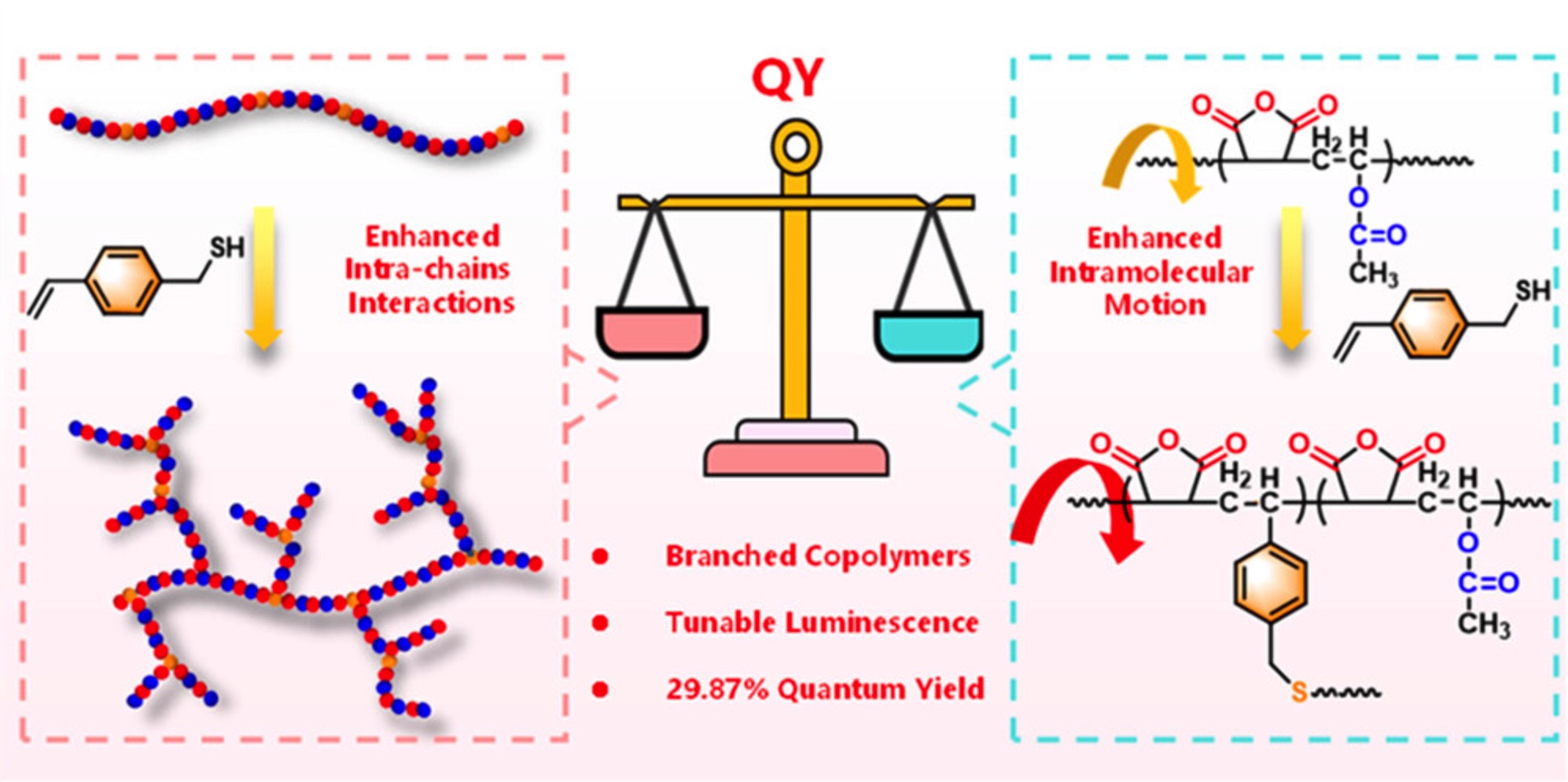Branched Copolymers with Tunable Clusteroluminescence in High Quantum Yield
Zixuan Zhou, Xiang Chen, Yang Wang*, Chenxi Hu, Ting Li, Shibo Wang, Weifu Dong, and Jinliang Qiao*
文章链接:https://pubs.acs.org/doi/10.1021/acsmacrolett.3c00549
ACS Macro Lett. 2023, 12, 11, 1523–1529
A novel type of fluorescence without large conjugated structures called clusteroluminescence (CL) has attracted a great deal of attention in recent years. Despite its many advantages, the emerging CL still encounters difficulties of low quantum yield (QY) and preliminary mechanisms. In this work, the branched structure was introduced into poly(maleic anhydride-alt-vinyl acetate) by chain transfer monomer. The emission wavelength of the branched copolymers is red-shifted with the increase of branching degree, and the absolute QY of solids can reach up to 29.87%. Further characterizations reveal that the branched structure can improve the flexibility of polymer chains, thereby promoting the intrachain interactions of subgroups. Furthermore, in the case of branched anhydride copolymers, the equilibrium between intrachain interactions and nonradiative transitions holds a crucial significance in determining the QY. This endeavor not only offers new insights into the mechanism of CL but also presents a novel approach to surmount the low QY of anhydride copolymers, thus broadening the horizons of CLgens to unexplored domains.
